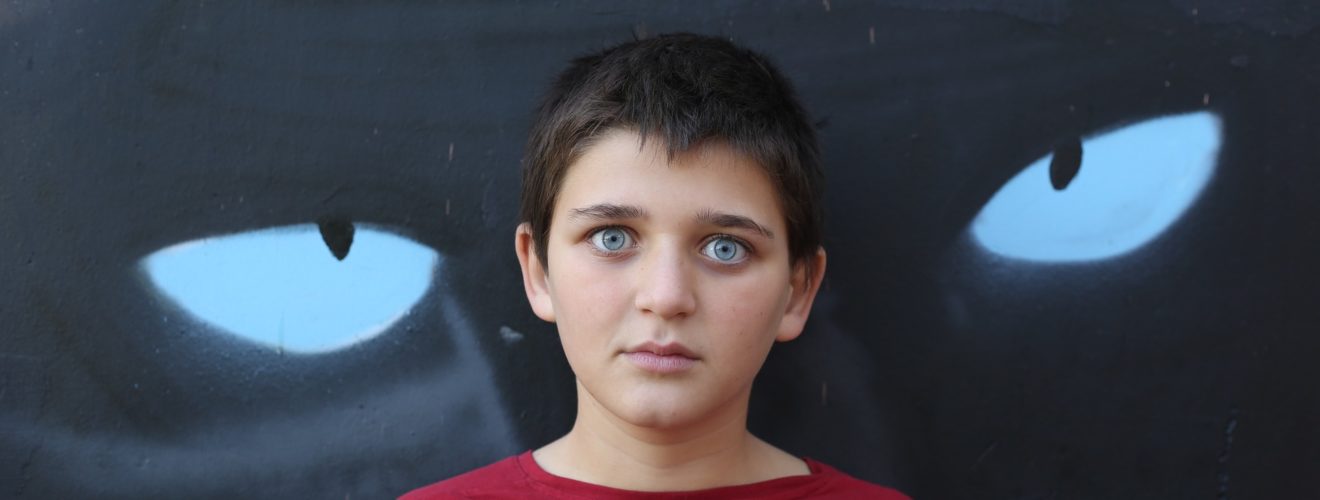Is CGI too advanced for its own good?

Realism has always been held up as the ultimate goal of new animation technology; now that goal is within sight, and the result is making audiences recoil. Katrina takes a look at the movie ‘Cats’ and the phenomenon known as uncanny valley.
It’s July 2019, I’m sitting at my office computer when my friend rushes over to my desk. “Have you seen the new Cats trailer?”. He grabs the mouse, opens a new tab, and for 2 minutes and 48 seconds I sit transfixed. An eternity passes. The trailer finally ends and I’m left speechless, staring at my screen. What the hell did I just watch?
For those unfamiliar with Andrew Lloyd Weber’s back catalogue, the source material for Cats is completely bonkers, but these CGI cats are taking it to the next level. The trailer makes for uncomfortable viewing; I’ve absolutely no desire to watch the whole film. I’m reminded of a disturbing movie I saw as a child – The Polar Express (I still can’t bear to watch it). Maybe I’ve got a low threshold but I find creepy CGI deeply unsettling. I look at Twitter and confirm I’m not the only one who hates ‘digital fur technology’:
Cats was freaking people out. The CGI cats were repeatedly compared to the stuff of nightmares. Entertainment journalist Kristy Puchko tweeted that the trailer made her eyes bleed. People were equal parts confused and horrified; the producers’ miscalculation was spectacular. Don’t get me wrong, the animators achieved exactly what they set out to do – they’ve created convincing cat-human hybrids. But perhaps these cats are a little too convincing.
Producers should know by now that people can find photorealism disturbing. Let’s return to The Polar Express, the creepiest animated film of the B.C. era (a.k.a. the period ‘Before Cats’). Some of the worst critic reviews focused on the “unnervingly smooth” humans, calling them “glaring impostors” and “as blank-eyed and rubbery-looking as moving mannequins — the stuff of nightmares, not dreams”1. The nightmare comparison always crops up. It’s as if almost-realism trips a switch in our brains; an alarm goes off, alerting us that something’s not quite right. While this is a relatively new issue for animators, roboticists have been grappling with this effect for decades.
There’s a tipping point where realism becomes uncomfortable.
This phenomenon, coined the ‘uncanny valley’, was first described by Japanese researcher Masahiro Mori in 1970. Now, for those who work with humanoid robots, it’s common knowledge that people find designs creepy once they approach a certain degree of anthropomorphism. There’s a balance to be struck; we feel familiarity, even empathy, for robots with faces2 – we find them cute (think of Pepper, the customer service robot) – but if the face is too human-like, we become unsettled and distrustful. The same rule applies in animation. Empathy drops. That uneasy feeling builds in the pit of your stomach. Your brain is trying to tell you that something’s off (hint: it’s Taylor Swift’s furry cat boobs).
While the uncanny valley can be exploited for horror and sci-fi movies, producers often stray into uncanny territory by accident. It ruins films – the effect creates discomfort at inappropriate moments and prevents audiences from connecting with the characters3. The phenomenon doesn’t just apply to human shape or facial features; unnatural human motion, however slight, accentuates the unsettling effect (though it’s probably not the only reason that zombies were deemed creepier than corpses in Mori’s study).
Are we hardwired to hate Cats?
In 2019, almost 50 years after Mori’s discovery, researchers based in the UK and Germany may have discovered the underlying uncanny valley brain mechanism. Using an imaging technique called fMRI (which highlights active brain areas by detecting changes in blood flow), subjects were shown pictures of various robots, humans, and ‘artificial humans’. The participants rated their likeability and human-likeness, while the researchers kept track of their brain activity.
Side note: I assumed ‘artificial humans’ was code for those realistic sex robots (if they don’t trigger your uncanny valley, I don’t know what will). But the way that researchers induced ultimate uncanny valley is even weirder. The ‘artificial humans’ were created by taking pictures of volunteers who’ve had ‘extreme’ plastic surgery, editing the colour to give them a greyish complexion and creating a mismatch between their head and body proportions. Perhaps unsurprisingly, the study participants liked these least of all. I can’t help but feel bad for those volunteers.
Psychologists suspected that uncanny valley is triggered when a human-like object fails to meet our expectations. We have an innate sense of what constitutes ‘normal’ human shape and motion. So if we recognise an object as ‘human’ and, on closer inspection, we realise that its behaviour or movement is beyond this scope, it could elicit a sense of unease.
The fMRI scans showed that part of the brain that decodes visual information was tracking the pictures. This wasn’t that surprising, however, they noticed the activity pattern changed depending on how human the object appeared. This created a “spectrum of human-likeness” in the participants’ brains. The scans also confirmed that our uneasy, uncanny valley feeling is created by circuits in the brain that evaluate social cues.
While I suspected that I find humanoid robots – and Cats – more repulsive than the average person, this study was the first to show definitively that people experience uncanny valley to differing degrees. The researchers asked participants whether they would accept a gift from the robot or ‘artificial human’ in question. Those most likely to reject gifts from the human-like objects showed more activity in their amygdala (a brain area associated with emotional responses, including fear and anxiety)4.
So what does this mean for CGI?
While some animators may enjoy the challenge, it’s possible that those who favour photo-realism lack the uncanny valley response. Your brain’s valuation system is shaped by your personal experiences (so maybe I’ve been scarred by The Polar Express). Perhaps these animators have spent so long with their designs, they no longer see their sinister side. After the Visual Effects Society claimed animators were scapegoated for the poor Cats reception, stating that “The best visual effects in the world will not compensate for a story told badly”, I suspect this is the case.
Either way, I believe the temptation to use new CGI technology is just too strong for some producers, despite peer-reviewed research – and poor box office takings – showing that audiences don’t really want it. There’s always someone willing to take the risk to be the first. Cats’ director actually waited for ‘digital fur technology’ so he could bring his vision to life. We’re seeing rapid advances in computer power and graphics processing; true photorealism is on the horizon. I just hope animators will learn their technical prowess cannot compensate for the gut-wrenching, skin-crawling sensation I get when I see a furry Judi Dench wearing a fur coat. Does anyone else think it’s made from the skin of other cats?
This article was specialist edited and copy-edited by Kirstin Leslie.
References
- You can check out the reviews here (and the trailer, if you’re feeling brave): www.imdb.com/title/tt0338348/criticreviews?ref_=tt_ov_rt
- www.wired.co.uk/article/uncanny-valley-creepy-robot
- Most filmmakers are aware of uncanny valley and try to avoid it: www.lafilm.edu/blog/the-uncanny-valley/
- www.cam.ac.uk/research/news/scientists-identify-possible-source-of-the-uncanny-valley-in-the-brain









